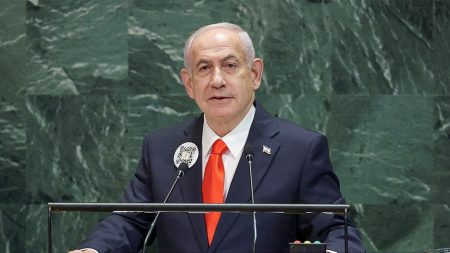The Canadian political landscape is poised for a significant shift as Prime Minister Justin Trudeau faces an imminent threat to his leadership. Jagmeet Singh, leader of the New Democratic Party (NDP), a crucial ally in maintaining Trudeau’s minority government, has declared his intention to introduce a motion of no-confidence when the House of Commons reconvenes in late January. This move, if supported by all opposition parties, will trigger an early election, potentially ending Trudeau’s nine-year tenure as prime minister. The timing of this political crisis coincides with a period of vulnerability for the Liberals, who are grappling with declining public support, fueled by voter fatigue, economic anxieties related to inflation and the housing crisis, and perceptions of being overly aligned with corporate interests. Public opinion polls consistently suggest that the Liberals would face a substantial defeat against the Conservative Party, the official opposition, should an election be called.
The NDP’s decision to withdraw its support stems from growing dissatisfaction with Trudeau’s leadership, particularly regarding what they perceive as an excessive focus on appeasing big business. Singh’s statement unequivocally signals the end of the Liberals’ time in power, regardless of who leads the party. This declaration was swiftly followed by a commitment from the Bloc Québécois, another major opposition party, to support the no-confidence motion. This effectively guarantees the motion’s passage, barring any unforeseen circumstances. The Conservatives, who have long advocated for an election, are expected to readily endorse the motion, further solidifying Trudeau’s precarious position. The convergence of these opposition forces presents a formidable challenge for Trudeau, leaving his government teetering on the brink of collapse.
Amidst this political turmoil, Trudeau has responded by undertaking a cabinet shuffle, a move widely interpreted as an attempt to project stability and control. However, the timing of the shuffle, immediately following Singh’s announcement and on the heels of the unexpected resignation of the finance minister, underscores the escalating pressure on Trudeau and raises questions about the effectiveness of this reshuffle in mitigating the impending crisis. Trudeau’s ability to navigate this challenge and retain power remains uncertain, particularly given the widespread calls for his resignation from within his own party and the looming threat of a no-confidence vote. The political uncertainty further complicates Canada’s position as it prepares for a new US presidential administration and the potential economic ramifications of impending trade policy changes.
The prospect of an early election throws the Liberal Party into a state of disarray, particularly with the leadership question hanging in the balance. The timing of the potential election, dictated by Singh’s planned motion, would likely preclude the Liberals from holding a leadership convention to choose Trudeau’s successor. This would force the party to contest the election under an interim leader, an unprecedented scenario in Canadian political history. While numerous Liberal legislators have publicly urged Trudeau to step down, his cabinet has maintained a united front, publicly expressing their support. This loyalty, however, may be tested as the political situation intensifies and the prospect of electoral defeat looms larger.
Further complicating the situation is the timing of this political crisis, coinciding with the upcoming inauguration of U.S. President-elect Donald Trump. Trump’s proposed trade policies, including a significant tariff on Canadian imports, pose a serious threat to the Canadian economy. The uncertainty surrounding Trudeau’s leadership and the potential for a snap election further hinders Canada’s ability to formulate a cohesive response to these potential trade challenges. Provincial leaders, concerned about the political turmoil in Ottawa, have emphasized the need for a united front to address the potential economic fallout of Trump’s policies, highlighting the urgency of resolving the leadership crisis and ensuring political stability.
This confluence of political and economic challenges creates a highly volatile situation for Canada. The impending no-confidence motion, coupled with internal dissent within the Liberal Party, casts a long shadow over Trudeau’s future as prime minister. The possibility of an election fought under an interim leader presents an unprecedented challenge for the Liberals, while the looming threat of protectionist trade policies from the incoming US administration adds another layer of complexity. Canada faces a critical juncture, requiring decisive leadership and political stability to navigate these turbulent waters and safeguard its economic future.















